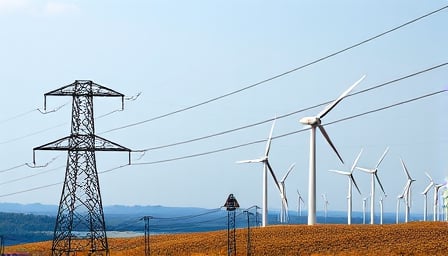Corporate Analysis: PPL Corp’s Infrastructure Investment and Capital Structure Updates
PPL Corp, a prominent energy and utility holding company, has announced a series of strategic actions aimed at reinforcing its long‑term competitiveness and resilience. The company’s subsidiary, PPL Electric Utilities, is committing capital to modernize the electric grid, while the parent company is addressing its capital structure through new share issuances and potential asset acquisitions. These developments are evaluated in the context of sector dynamics, regulatory environments, and broader macroeconomic trends.
1. Infrastructure Modernization and Grid Resilience
1.1 Rationale for Investment
Electric utilities worldwide are grappling with increasing climate volatility, aging infrastructure, and evolving regulatory expectations for reliability and sustainability. In the United States, the North American Electric Reliability Corporation (NERC) and the Federal Energy Regulatory Commission (FERC) have issued guidance emphasizing grid resilience against extreme weather events such as hurricanes, wildfires, and winter storms.
PPL Electric Utilities’ capital allocation targets upgrades to transmission lines, distribution automation, and advanced monitoring systems. These measures are designed to reduce outage frequency and duration, enhance real‑time asset management, and support the integration of distributed energy resources (DERs) such as rooftop solar and battery storage.
1.2 Expected Impact on Operational Performance
By bolstering grid robustness, PPL is likely to achieve:
- Reduced Outage Costs: Fewer interruptions translate into lower regulatory penalties and improved customer satisfaction metrics.
- Operational Efficiency: Automation and advanced analytics can lower maintenance costs and improve asset lifecycle management.
- Regulatory Compliance: Early adoption of resilience standards positions the company favorably in forthcoming regulatory reviews and potential incentive programs.
1.3 Market Positioning
Within the U.S. utility sector, utilities that invest proactively in grid resilience often outperform peers in customer retention and cost of capital. PPL’s focus on modernization aligns it with utilities such as Duke Energy and Southern Company, which have similarly prioritized grid upgrades amid increasing climate risks.
2. Capital Structure Adjustments
2.1 Beneficial Ownership Filing
PPL Corp has filed a Statement of Changes in Beneficial Ownership of Securities (Form 4) with the SEC. While the specifics were not disclosed, such filings typically indicate changes among insiders, institutional investors, or significant shareholders. Monitoring these movements can signal confidence levels, potential strategic shifts, or preparatory actions for upcoming corporate transactions.
2.2 Board‑Approved Asset Acquisition and Private Placement
The Board has approved a proposal to acquire strategic assets and simultaneously issue new shares via a private placement. The planned transaction is slated for shareholder consideration at an upcoming Extraordinary General Meeting (EGM). Key points include:
- Asset Acquisition: Likely to involve complementary infrastructure, renewable energy assets, or technology platforms that can augment PPL’s service portfolio.
- Private Placement: Issuance of new equity can provide the necessary capital without diluting existing shareholders excessively. The private nature of the placement allows for tailored terms with a limited group of investors, potentially accelerating execution.
- Shareholder Approval: The EGM will assess the transaction’s value proposition, including purchase price, financing terms, and strategic fit.
2.3 Financial Implications
Assuming a favorable outcome, the transaction could:
- Diversify Revenue Streams: Acquired assets may introduce new service lines, such as distributed generation or energy storage.
- Enhance Capital Efficiency: New equity reduces reliance on debt, potentially improving debt‑to‑equity ratios and cost of capital.
- Signal Strategic Direction: A well‑structured acquisition can position PPL as a forward‑looking player in the evolving energy mix.
3. Cross‑Sector and Macro‑Economic Context
- Renewable Energy Transition: Across the energy sector, utilities are integrating renewables to meet carbon reduction targets. Infrastructure upgrades are essential to accommodate variable generation, making PPL’s investment timely.
- Regulatory Evolution: FERC’s emphasis on reliability and NERC’s resilience standards create a regulatory impetus for grid enhancements, which can translate into regulatory incentives or reduced penalty exposure.
- Capital Markets Environment: Low interest rates and abundant liquidity have made equity financing attractive. Private placements can secure capital at favorable valuations, especially for companies with strong utility cash flows.
- Technological Disruption: The rise of smart grid technologies and advanced analytics benefits all utilities, creating a competitive landscape where early adopters secure market leadership.
4. Conclusion
PPL Corp’s dual focus on strengthening its electric grid and reconfiguring its capital structure reflects a strategic approach to navigate both operational and financial challenges inherent in the utility sector. By investing in resilience, the company aligns itself with regulatory expectations and customer demands for reliable service. Concurrently, the proposed asset acquisition and private placement position PPL to expand its asset base and optimize its capital structure, potentially enhancing shareholder value and competitive standing in an industry undergoing rapid transformation.
